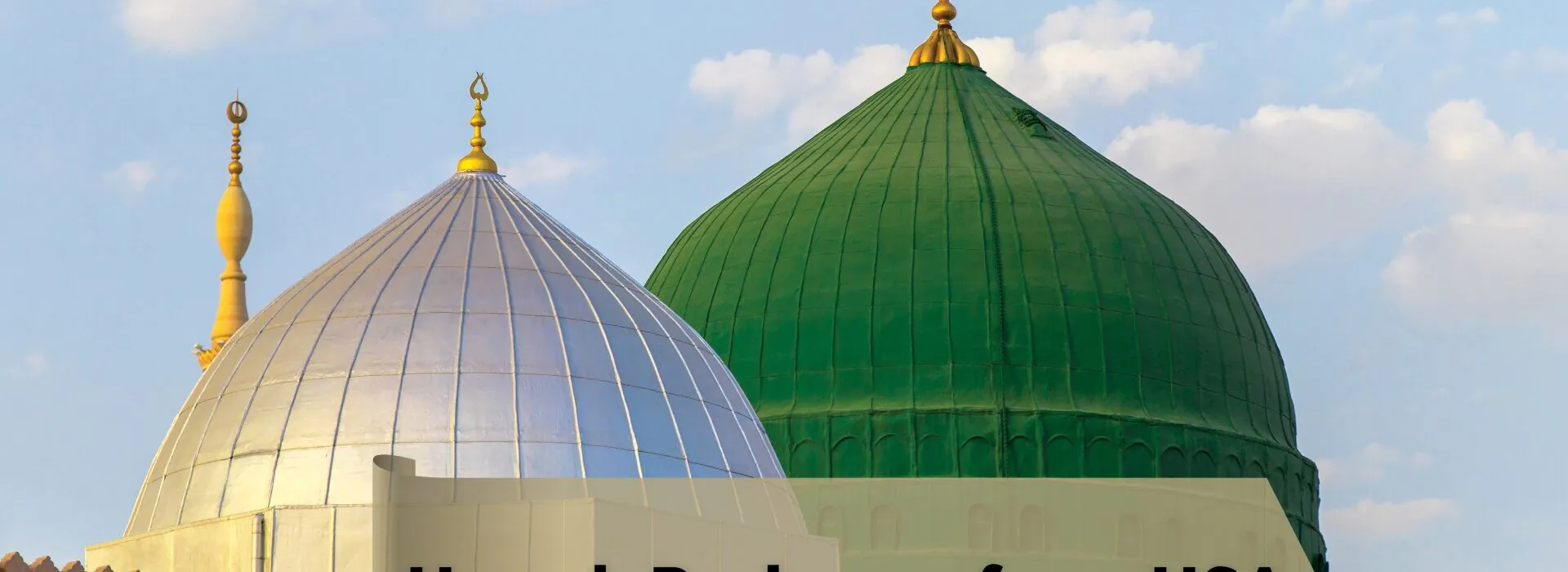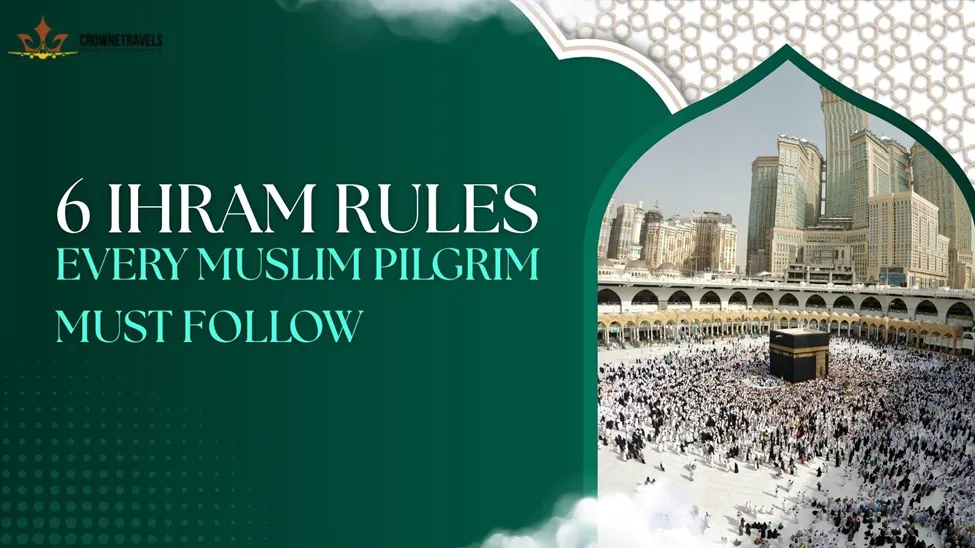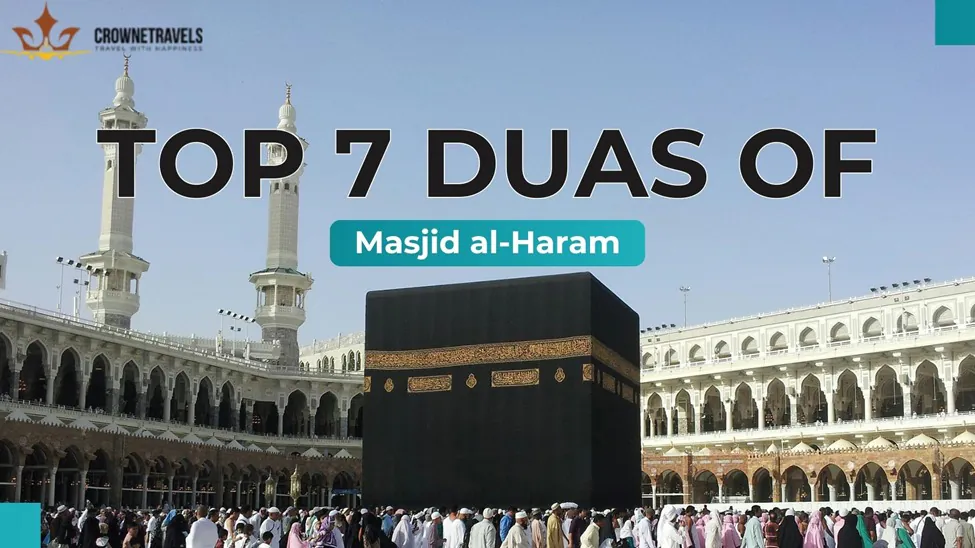It is important to plan a spiritual trip to the sacred cities of Mecca and Medina, especially in case of travelling by the United States. The religious pilgrimage of Umrah gives the Muslims a chance to purify their soul and seek blessings all the year round unlike Hajj that has timing constraints. There are many travel providers who provide different packages, so when it comes to choosing the appropriate Umrah package, choosing the right one feels overwhelming. This is a detailed guide that will assist you in your decision as to the available options in your spiritual journey or not.
It may be that this is your first Umrah or it may be your second experience, but knowing what to expect in a package trip may save you time, money, and loss of stress. Visa processing, accommodation choice, flight program, guided tours, etc, every element is key in making the pilgrimage experience meaningful and comfortable.
Umrah Packages from USA: Your Gateway to Spiritual Fulfillment
Umrah Packages from USA have also become more advanced and are providing the Americans Muslims with an easy and all-bbe-all package to their pilgrimage requirements. These special packages are targeted at the special needs of passengers leaving major cities in the US such as New York, Los Angeles, Chicago, Houston and Miami. The best thing with these packages is that they are complete packages, as they do everything in Saudi Arabia such as visa handling and ground transport.
The traditional packages of Umrah nowadays usually cover flights to and from the country, visa processing, hotel, tours, and other transportation, and guided touring around the holy mosques. Other services offered by many providers include pre-departure orientations, multilingual guides, around-the clock customer services during your travel, etc. Firms such as Crowne Travels have also transformed the industry through customized service and low cost and thus the holy journey is now affordable to Muslims all over America.
Some of the details to take into account when choosing an Umrah package are the flexibility in departure city, the type of accommodation, the size of the group, and other services provided. Others are family packages that accommodate those with children and some others are senior pilgrims who are in need of special assistance. It is all about having a provider who is aware of your particular needs and is able to tailor their product to suit you.
Essential Components of Quality Umrah Packages
Accommodation Near the Holy Sites
To a large extent, the quality and the place where you stay can affect your Umrah experience. Hotels located within a walking distance of Masjid al Haram in Mecca and Masjid an-Nabawi in Medina are also included in premium packages. These properties will provide the benefit of being able to pray at the mosque without having to drive long distances, so that you can use most of your time praying and contemplating.
More affordable alternatives can be the accommodation options that are slightly more distant, yet make it possible to comfortablely stay and get to the Holy Sites and do so with an efficient and secure transport. A wide variety of packages also provide various types of rooms, such as standard accommodation and luxury suites so that pilgrims could select according to their tastes and financial means.
Visa Processing and Documentation
Saudi Arabia has simplified the visa procedure of Umrah pilgrims, yet the process of keeping up with the requirements might be tough to novice travelers. Quality Umrah packages also contain the provision of the visa processing services where all documents are made perfect and presented in the right manner. This service normally includes visa application services, booking of appointments and follow up during the approval process.
Travel agencies specializing in pilgrimage have current information on evolving visa policies and have the ability to assist pilgrims in the event that they require extra paperwork. They, also, give good guidance on the validity of passports, vaccination certificates and other necessary travel documentation.
Flight Arrangements and Scheduling
The flights direct to Saudi Arabia by the major cities of the USA have also become more frequent, which has shortened the way of traveling and alleviated the fatigue of pilgrims. Umrah packages also have an agreement with airlines on group rates, which saves on cost as opposed to one-on-one bookings. The arrangements usually consist of the baggage allowances that are checked and they are applicable during long-term stays and pilgrimage requirements.
The packages are also mostly elastic to departure dates and duration like 7-day express package and month-long extended packages. This variety makes pilgrims to have control over their itineraries, in order to fit their time and spiritual goals.
Choosing the Right Package for Your Needs
Budget Considerations and Value Assessment
Umrah packages differ sharply in prices and normally range between 3,000 and 8,000 per capita regarding the quality of accommodation, time to be spent, and services that are to be provided. Even though one of the main factors might be a budget, the value proposition in general should also be evaluated. Consider something within the basic cost against other costs that you might want to bear independently.
More expensive packages can be offered with such higher-value services as individual transportation, upscale hotel rooms, and expert guides whereas low-cost deals entail the basic services with shared facilities. Compare the cumulative price of single booking and package booking to know the actual savings and convenience aspect.
Group Size and Travel Preferences
The pilgrims who like intimate group experiences, with personalized attention, and those who like community of not only their own group is a complete contrast. The smaller groups might offer greater flexibility in scheduling and customized service whereas the larger groups might offer better pricing due to economies of scale.
Think about how comfortable you are traveling in a group and how much you would enjoy more organized tours or the freedom to discover on your own or not. It is available in many providers and you can always shape your experiences to suit your individual tastes.
Preparing for Your Umrah Journey
Pre-Departure Planning and Orientation
With reputable Umrah package providers, there are elaborate pre departure orientations on religious practices, cultural anticipations, packing, and useful tips in traveling. These classes assist first-time pilgrims in knowing different rituals and equip them both psychologically and spiritually to their expeditions.
Physical training is also necessary, particularly among the elderly pilgrims or those with health related disabilities. Numerous packages will give information on how to prepare towards fitness, medical checkups to be taken, and how to manage medication during the trip.
Cultural Sensitivity and Etiquette
Knowing about the Saudi Arabian culture and about the Islamic etiquette can be the value to your pilgrimage which will show that you respect the population. Cultural briefings like dressing well, socialization and mosque etiquettes will also be considered as being part of quality packages.
Knowing some simple Arabic phrases, the time of prayer and getting to know local traditions can help a lot in enhancing the level of comfort and spiritual relations throughout the trip.
Maximizing Your Spiritual Experience
Religious Guidance and Educational Opportunities
The majority of the Umrah tourism packages include religious guides who are very knowledgeable and who accompany the tourists through the trip by providing a background of the rituals, their meaning and spiritual guidance. Such scholars render pilgrimage experience even more productive since they offer the rich Islamic heritage of the Holy Cities and make pilgrims aware of the hidden connotations of their actions.
The spiritual development and learning facilities that are not confined to the mere pilgrimage rituals include visits to historical sites, interactive lectures, and group conversations.
Personal Reflection and Worship Time
Although group events and guided tours are important to add value, it is important to ensure that there are enough time to perform personal worship and reflection. Quality packages combine programmed activities and free time that enable the pilgrims to have personal spiritual aims and relate to their faith personally.
Numerous pilgrims who have gone through the journey suggest keeping a spiritual journal throughout the pilgrimage, logging prayers, thoughts and must-have times that can be enjoyed even when one gets back home.
Making Your Sacred Journey a Reality
To choose the appropriate Umrah package in the USA, one needs to conduct a thorough research, know what he wants and have confidence in the service provider. There are other companies such as Crowne Travels that have created its name on offering high-quality services, affordable prices, and total care during the pilgrimage process. They can do this because of their skills in dealing with the complicated logistics of traveling to religious sites across borders so that pilgrims can concentrate on their religious goals and not on administration.
The magical pilgrimage of Umrah is spiritual in the most profound sense and transcends the physical experience by a long way. You establish the basis of a meaningful, comfortable and transformative pilgrimage by selecting a known provider and an excellent package. Think through the choices, pose probing questions and choose a package that will meet your spiritual objectives, financial capability, and travel interests. Your investment in this human journey will give spiritual returns which will be felt throughout your life.











